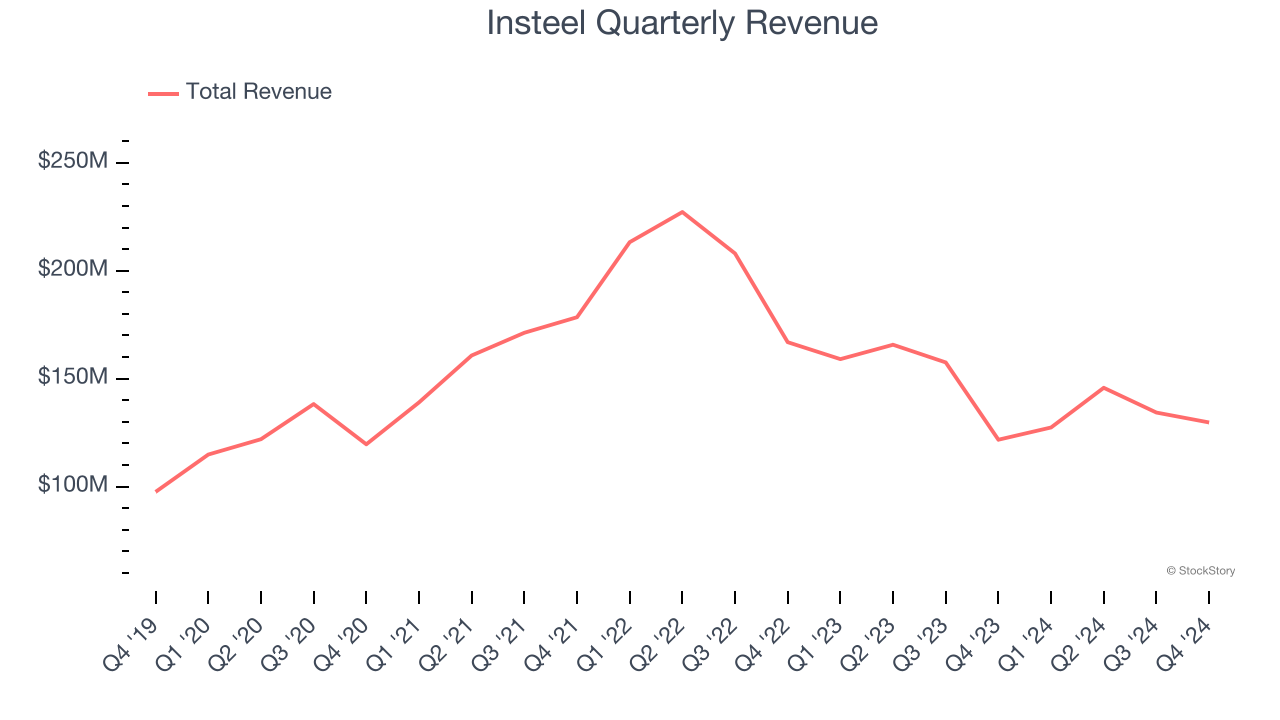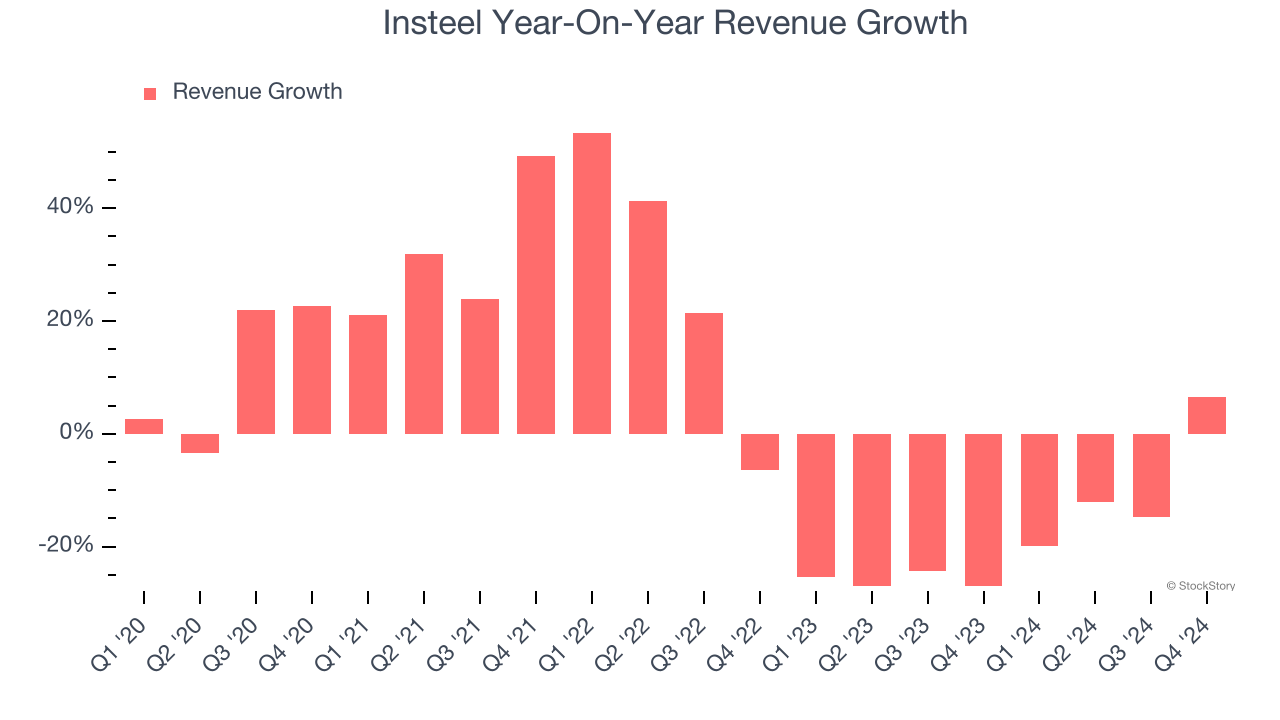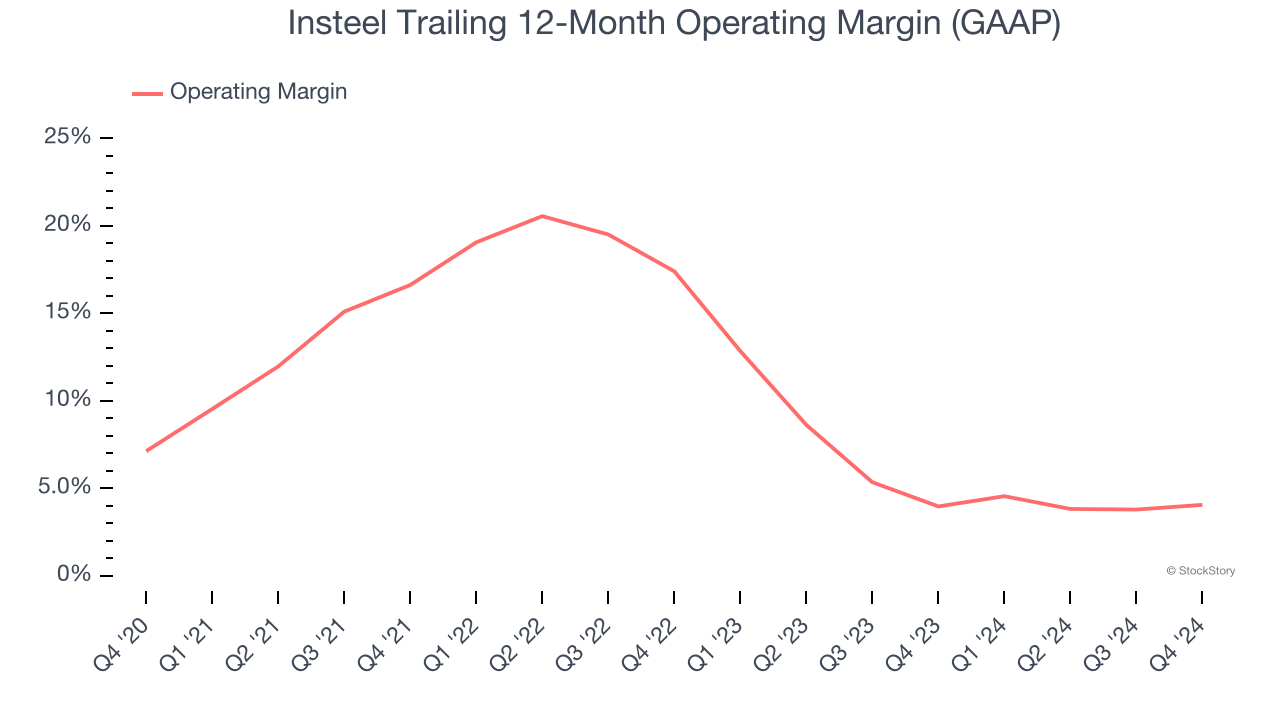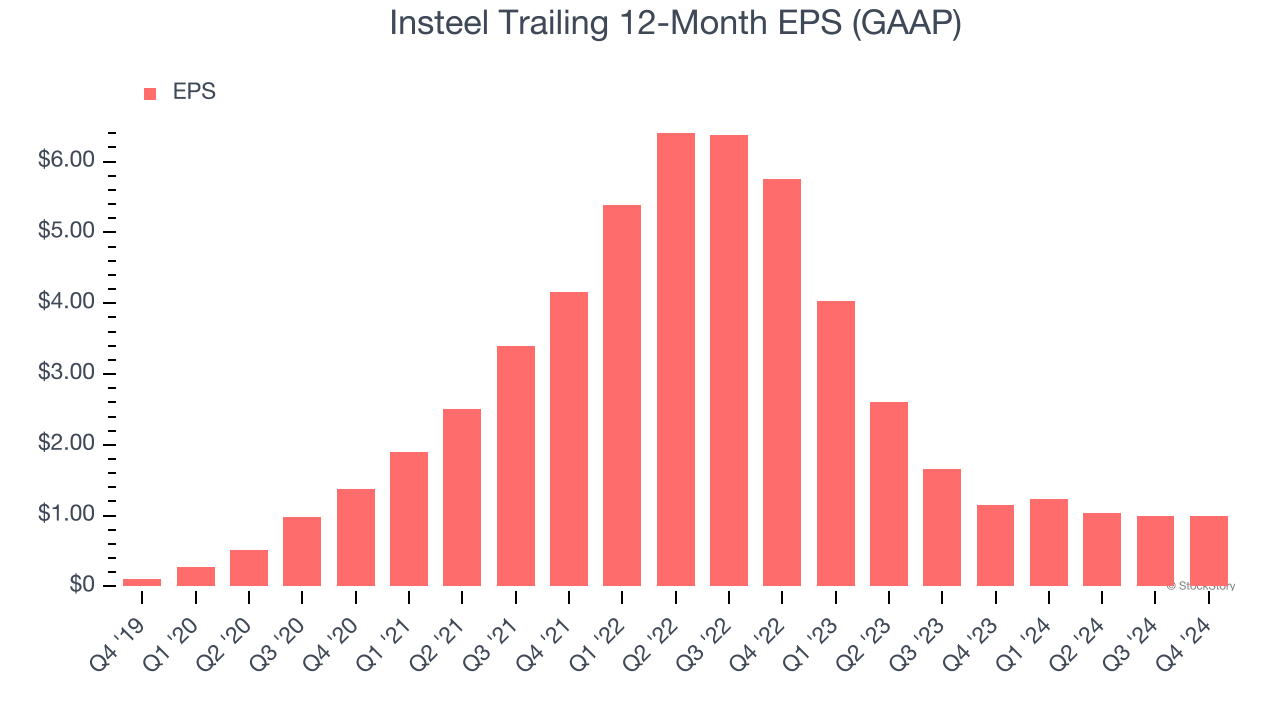Steel wire manufacturer Insteel (NYSE:IIIN) reported revenue ahead of Wall Street’s expectations in Q4 CY2024, with sales up 6.6% year on year to $129.7 million. Its GAAP profit of $0.06 per share was 72.7% below analysts’ consensus estimates.
Is now the time to buy Insteel? Find out by accessing our full research report, it’s free.
Insteel (IIIN) Q4 CY2024 Highlights:
- Revenue: $129.7 million vs analyst estimates of $117.5 million (6.6% year-on-year growth, 10.4% beat)
- Adjusted EPS: $0.06 vs analyst expectations of $0.22 (72.7% miss)
- Adjusted EBITDA: $6.42 million vs analyst estimates of $5.63 million (4.9% margin, 14% beat)
- “The improved start to the year, together with increasing contributions from our recent acquisitions, positions us well as we move into the balance of fiscal 2025. While we are optimistic that our markets will recover during 2025"
- Operating Margin: 1.3%, up from -0.1% in the same quarter last year
- Free Cash Flow Margin: 12.6%, up from 7.9% in the same quarter last year
- Market Capitalization: $482.5 million
Company Overview
Growing from a small wire manufacturer to one of the largest in the U.S., Insteel (NYSE:IIIN) provides steel wire reinforcing products for concrete.
Commercial Building Products
Commercial building products companies, which often serve more complicated projects, can supplement their core business with higher-margin installation and consulting services revenues. More recently, advances to address labor availability and job site productivity have spurred innovation. Additionally, companies in the space that can produce more energy-efficient materials have opportunities to take share. However, these companies are at the whim of commercial construction volumes, which tend to be cyclical and can be impacted heavily by economic factors such as interest rates. Additionally, the costs of raw materials can be driven by a myriad of worldwide factors and greatly influence the profitability of commercial building products companies.
Sales Growth
A company’s long-term performance is an indicator of its overall quality. While any business can experience short-term success, top-performing ones enjoy sustained growth for years. Over the last five years, Insteel grew its sales at a sluggish 3.6% compounded annual growth rate. This fell short of our benchmark for the industrials sector and is a poor baseline for our analysis.

Long-term growth is the most important, but within industrials, a half-decade historical view may miss new industry trends or demand cycles. Insteel’s history shows it grew in the past but relinquished its gains over the last two years, as its revenue fell by 18.8% annually. Insteel isn’t alone in its struggles as the Commercial Building Products industry experienced a cyclical downturn, with many similar businesses observing lower sales at this time. 
This quarter, Insteel reported year-on-year revenue growth of 6.6%, and its $129.7 million of revenue exceeded Wall Street’s estimates by 10.4%.
Looking ahead, sell-side analysts expect revenue to grow 9.9% over the next 12 months, an improvement versus the last two years. This projection is admirable and suggests its newer products and services will spur better top-line performance.
Today’s young investors won’t have read the timeless lessons in Gorilla Game: Picking Winners In High Technology because it was written more than 20 years ago when Microsoft and Apple were first establishing their supremacy. But if we apply the same principles, then enterprise software stocks leveraging their own generative AI capabilities may well be the Gorillas of the future. So, in that spirit, we are excited to present our Special Free Report on a profitable, fast-growing enterprise software stock that is already riding the automation wave and looking to catch the generative AI next.
Operating Margin
Insteel has managed its cost base well over the last five years. It demonstrated solid profitability for an industrials business, producing an average operating margin of 10.7%. This result was particularly impressive because of its low gross margin, which is mostly a factor of what it sells and takes huge shifts to move meaningfully. Companies have more control over their operating margins, and it’s a show of well-managed operations if they’re high when gross margins are low.
Analyzing the trend in its profitability, Insteel’s operating margin decreased by 3.1 percentage points over the last five years. Even though its historical margin is high, shareholders will want to see Insteel become more profitable in the future.

This quarter, Insteel generated an operating profit margin of 1.3%, up 1.3 percentage points year on year. Since its gross margin expanded more than its operating margin, we can infer that leverage on its cost of sales was the primary driver behind the recently higher efficiency.
Earnings Per Share
We track the long-term change in earnings per share (EPS) for the same reason as long-term revenue growth. Compared to revenue, however, EPS highlights whether a company’s growth is profitable.
Insteel’s EPS grew at an astounding 58.2% compounded annual growth rate over the last five years, higher than its 3.6% annualized revenue growth. However, this alone doesn’t tell us much about its business quality because its operating margin didn’t expand.

Like with revenue, we analyze EPS over a shorter period to see if we are missing a change in the business.
Insteel’s two-year annual EPS declines of 58.5% were bad and lower than its two-year revenue performance.In Q4, Insteel reported EPS at $0.06, in line with the same quarter last year. This print missed analysts’ estimates, but we care more about long-term EPS growth than short-term movements. Over the next 12 months, Wall Street expects Insteel’s full-year EPS of $0.99 to grow 43.9%.
Key Takeaways from Insteel’s Q4 Results
We liked that Insteel beat analysts’ revenue and EBITDA expectations this quarter. Overall, this was a solid quarter. Management struck an optimistic tone, saying “The improved start to the year, together with increasing contributions from our recent acquisitions, positions us well as we move into the balance of fiscal 2025. While we are optimistic that our markets will recover during 2025." The stock traded up 4.7% to $25.99 immediately following the results.
Sure, Insteel had a solid quarter, but if we look at the bigger picture, is this stock a buy? We think that the latest quarter is only one piece of the longer-term business quality puzzle. Quality, when combined with valuation, can help determine if the stock is a buy. We cover that in our actionable full research report which you can read here, it’s free.
